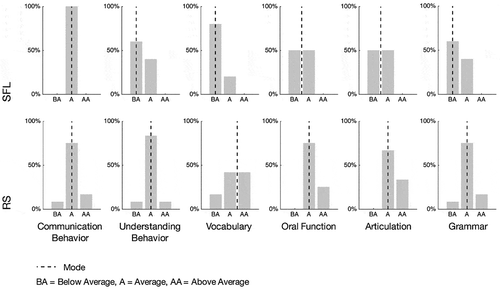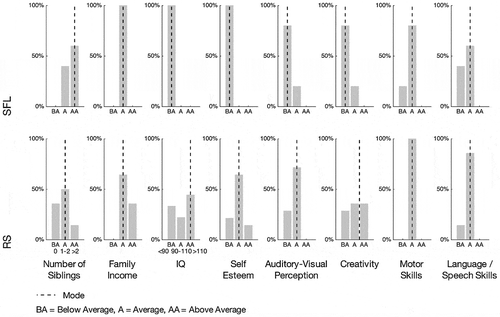Figures & data
Table 1. Psycho-social parameters, language and other skills assessed in the study cohort
Table 2. Skills examined, sources and test procedures
Table 3. Skills/parameters examined and assessment criteria
Figure 1. Frequency distribution of speech-/language skills according to the assessment criteria “Average”(A), “Below Average”(BA) and “Above Average” (AA) in children later attending “regular schools” (RS) (n = 14) or “school for special needs”(SFL) (n = 5). Mode is shown in the figures; the criteria “oral function” and “articulation” in SFL-children is based on the assessment of four children

Figure 2. Frequency distribution of different psycho-social skills and social data according to the assessment criteria “Average”(A), “Below Average”(BA) and “Above Average” (AA) in children later attending “regular schools” (RS) (n = 14) or “school for special needs”(SFL) (n = 5). Mode is shown in the figures

